From the Field
June 25: Rich Hoyer on his stint as Master Chef on the just concluded Gambell, Alaska tour
Whenever I had all the veggies prepped, the freshly baked bread cooling, and main dish in the oven, I did get out birding for an hour or so to see some of the fun birds that the group reported each time they returned to the Sivuqaq Lodge. I could hear yodeling Glaucous Gulls on Troutman Lake just by stepping out the back door of the kitchen, which I did frequently when I had only short breaks such as when the “Ultimate Turtle Brownies” (see below) or snickerdoodles for the afternoon snack were baking. But it wasn’t a far walk to the Near Boneyard, where singing Lapland Longspurs, Snow Buntings, Hoary Redpolls, and Yellow Wagtails could be found, and the female Common Ringed Plover was only a little farther away at the Northeast Marsh. Two or three pairs of White Wagtails were setting up territories around town, and I even witnessed one copulating pair, oblivious to my presence. But I was having too much fun getting the next meals ready to take advantage of the reports of Great Knot, Bean Goose, Ross’s Gull, and Red-necked Stint that came over the radios. I did get to witness the amazing seabird spectacle from “The Point” a couple of days, with thousands of Crested Auklets forming the backdrop to scarcer migrants such as Sabine’s Gull and Arctic Loon that passed during my short visits. While no meals were delayed due to my chasing any rarities this year (like what happened with last year’s Stonechat), I always let people know that that’s an option…and hope for such an event next year.
Then we had a two days in the Nome area, out trip out the Kougarok Road full of spectacular highlights such as Bristle-thighed Curlew (seen by all, even those who stayed on the road), Gyrfalcon on a nest, singing American and Pacific Golden-Plovers, Rusty Blackbird, fantastic views of Bluethroats.

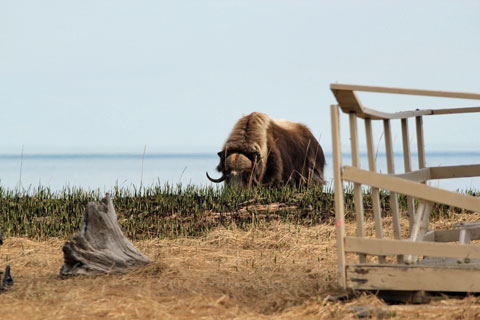
June 18: Rich Hoyer on his recently completed tour of Oregon
Oregon was full of great birds, amazing scenery (see below – Malheur National Wildlife Refuge, Steens Mountain and John Day Fossil Beds National Monument) and a marvelous group of participants. Flammulated Owl, Sooty Grouse, Mountain Quail (see below), Tufted Puffin, and White-headed Woodpecker were just a few of the species that made it to the group’s list of favorites, but everyone was tortured to narrow it down to just a few. My own favorites were the Black Swifts migrating north along the coast (even some resident birders have yet to see this species in Oregon) and some fabulous views of the most charming bird in the world, Calliope Hummingbird. I really look forward to running this same itinerary in July next year – with perhaps a few tweaks to take advantage of shorebird migration and other differences in bird activity as well as access to higher elevations. We'll also offer a pelagic trip extension, something we haven't done on our spring tours.
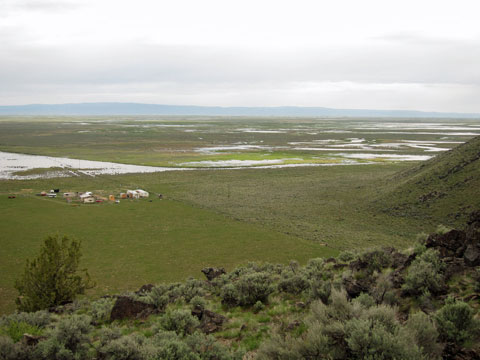
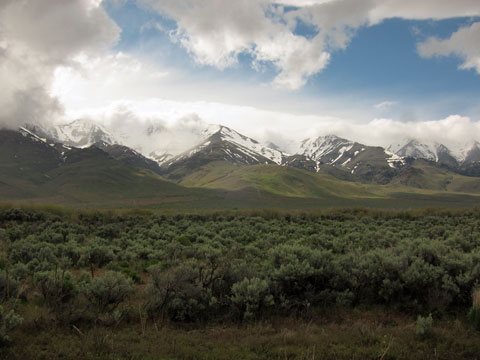
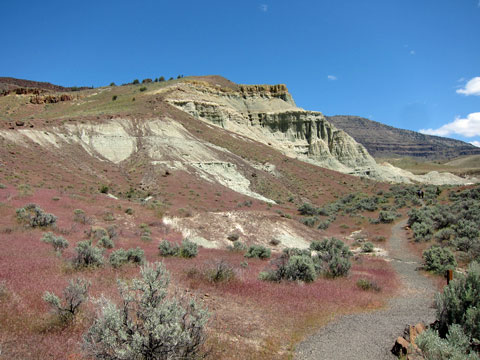
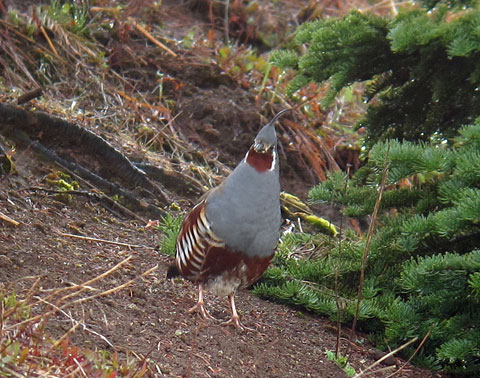
June 14: Will Russell on the just completed James Lidster tour to Mongolia
What to say about Mongolia...? Vast, spectacular landscapes ranging from the dune complexes in the northern Gobi Desert (see below, bottom) where thousands of Pallas's Sandgrouse come in to drink, to the Wallcreeper and Lammergeier infested gorges of Yolyn Am (see below) and the endless rolling steppes with their wealth of larks, including the sublime Mongolian, and Oriental Plover (see below), one of the world's most elegant shorebirds with a courtship flight that could inspire a generation of choreographers. Add to this the mountain river valleys in their early spring with abundant birdsong emanating from the likes of Black Grouse, Wryneck, Dusky and Two-barred Greenish Warblers, Siberian Rubythroat, and Common and Long-tailed Rosefinches among many others, and similar but lowland valleys with breeding White-naped Cranes, Marsh and Wood Sandpipers, Common Redshank and Black-tailed Godwits. It is a place which captured my imagination years ago...and I was not disappointed.
I should say too that James Lidster was a brilliant leader and the group laughed way too much for a serious bird tour.
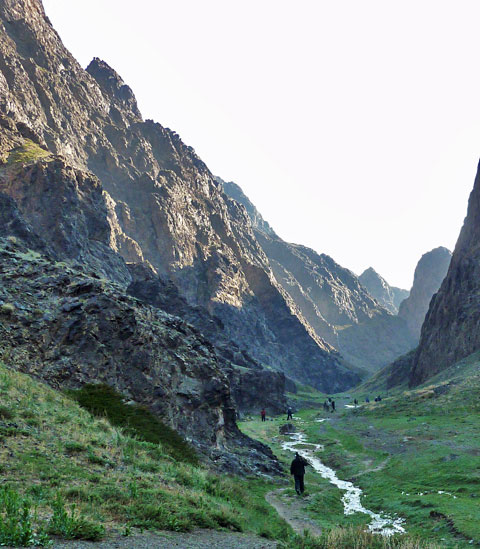
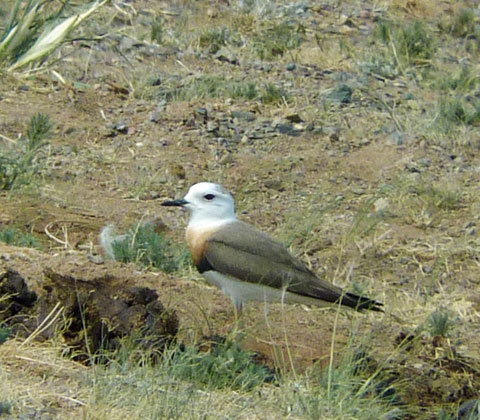
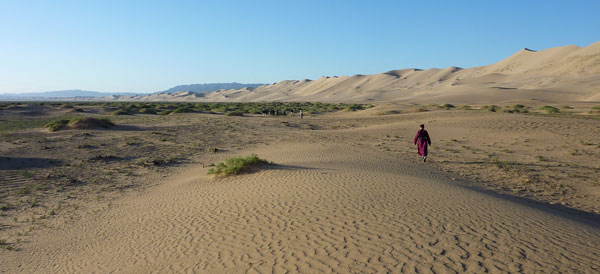
June 2: James Lidster from Mongolia
Only had a few hours birding with the group in Mongolia today, but Thick-billed, Dusky, Arctic, Two-barred and Pallas's Warblers all seen, plus Red-throated, Dark-sided and Asian Brown Flycatchers, Daurian Jackdaw, Saker, Black Vulture, Brown Shrikes, Daurian Redstart....then we fly to the Gobi...No email now for over a week!
May 23: Steve Howell on his just completed Western Pacific Odyssey cruise
You know you’ve been on a ship for a while when the journey begins with Gibson’s [Wandering] Albatross and Common Diving-Petrel and ends with Laysan Albatross and Japanese Murrelet! The amazing West Pacific Odyssey crosses almost 6000 miles of ocean, from New Zealand to Japan, and with this voyage come some amazing birds and other wildlife – from the recently rediscovered Beck’s Petrel to the enigmatic “New Caledonia Storm-Petrel,” from the sleek elegance of Moustached Treeswifts to squadrons of impressive Blyth’s Hornbills filling the air with their wing noise, from a Polynesian Storm-Petrel skipping over the waves to numerous colorful flyingfish (36 types identified this year) shooting out from the bow, from a very confiding and handsome Steller’s (Short-tailed) Albatross (below) to an even more confiding Kagu, and from Red-footed Boobies hunting flyingfish to Bonin Petrels hunting the amazing flying squid (below)!
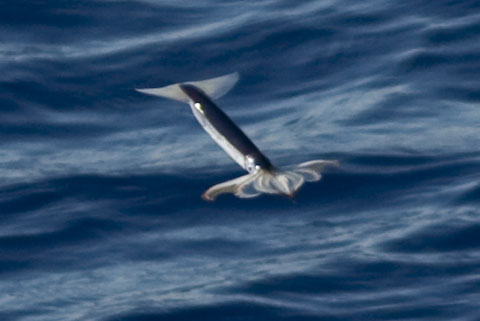
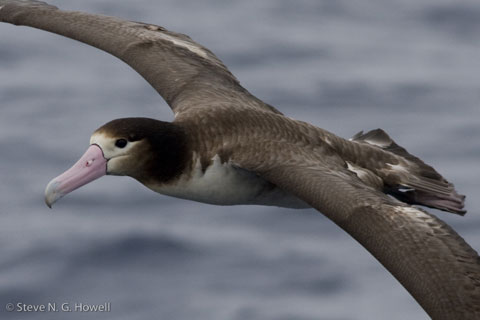
May 22: James Lidster on his about to be completed tour to Bulgaria
It's the final night of my 4th spring tour to Bulgaria and it's been yet another great trip. Birding highlights have included Dalmatian and European White Pelicans, Little Bittern, Pygmy Cormorant, Squacco and Purple Herons, Eastern Imperial, Lesser Spotted and White-tailed Eagles, Levant Sparrowhawks, Red-footed and Saker Falcons, Pied and Isabelline Wheatears, Olive Tree and Eastern Olivaceous Warblers, Western Rock Nuthatch, Rosy Starlings, Sombre Tit, Black-headed and Ortolan Buntings not to mention the near daily encounters with Hoopoe, Golden Oriole, European Bee-eater, Rollers and the most amazing Wallcreeper experience i have ever had!!
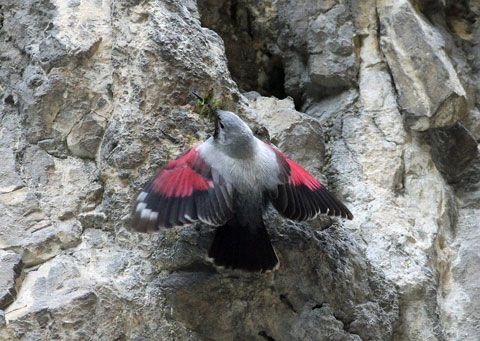
May 18: Jon Dunn on his on-going Upper Midwest tour
It's been a cool, damp spring but due in large measure to the weather the birds have been spectacular especially at Crane Creek, Ohio, but also at Point Pelee. We've seen all possible eastern neotropical migrants with the exception of Kirtland's and Golden-winged Warblers (both coming soon we hope) and Olive-sided Flycatcher. The weather has kept the birds low and to date we've had amazing looks at 36 species of warbler (Blackburnian below from Luke Seitz wasn't taken on the tour but could have been) including direct comparisons of Connecticut and Mourning, and all the Empids including Alder and Acadian together. There really is no place like the upper midwest to see the spring migration of passerines.
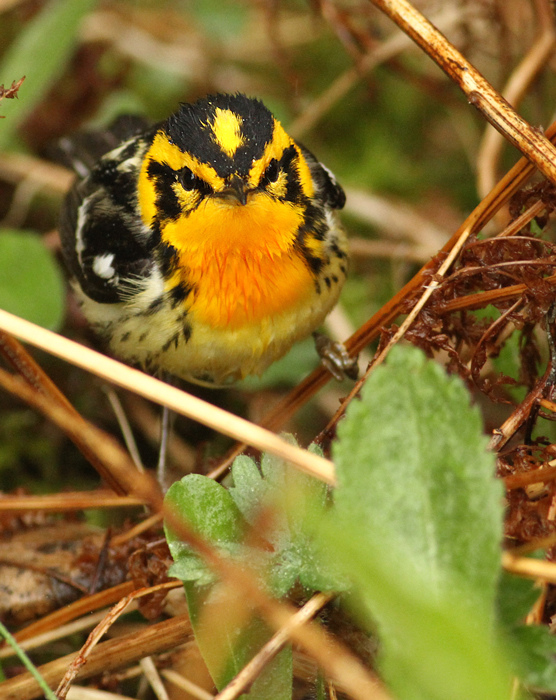
May 17: Gavin Bieber on his just completed tour of Southeastern Arizona
2011 has been one of the driest years in recent memory, and the lack of water and foraging opportunities in the mountains doubtless contributed to the large number of migrant birds in the lowlands - Hammond's Flycatchers, Swainson's Thrushes, Wilson's Warblers, and Lazuli Buntings (one lawn held hundreds) were particularly numerous. Although our itinerary had to be shifted to take into account the serious fires still raging in the Chiricahua Mountains, we recorded an impressive array of birds (breaking the previous high count for the tour by 11 species!). As it is billed as an owls and warblers tour, the nine species of owls and 17 species of warblers bear mentioning, as do the nine species of hummingbirds (an Anna's below) and 19 species of flycatchers! I think the agreed upon highlight of the tour was a stunning male Montezuma Quail, tracked down and watched as it was calling, but there would be votes as well for SE Arizona itself - remarkably scenic and with a fabulously varied natural history.
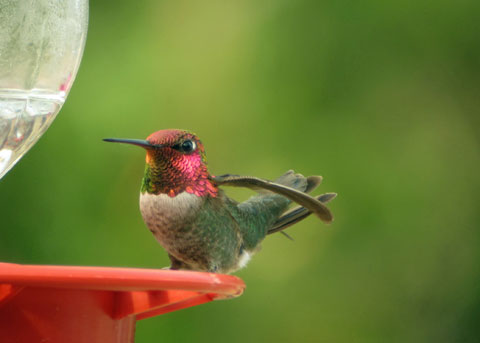
May 10: Steve Rooke on his just completed tour to Georgia
Our visit to the tiny country of Georgia managed to find all the main target birds unusually quickly thanks to the heavy falls of snow that brought some normally elusive higher elevation species down to our level. A flock of 20 Guldenstadt’s Redstarts and one of 19 Great Rosefinches got things off to a good start and this was followed by wonderful ‘scope' views of Caucasian Snowcock and Caucasian Black Grouse, some of which were seen performing thier leaping lekking display. The supporting cast included plenty of Ring Ouzels, Twite, Red-fronted Serins, masses of migrating Ortoloan Buntings, and rare migrants in the form of both Collared and Semi-collared Flycatchers. We had as well magical encounters with two candidates for any list of the world's greatest birds, the mighty Lammergeieir and dazzling Wallcreepers (see below), all against the backdrop of the stunning Kazbegi valley. Moving down to the south east we found ourselves in a much different (and warmer) landscape of wide open steppe dotted with pistachio trees where Imperial Eagles sailed overhead and Menetries’s Warblers scolded us from the bushes. We managed to fit a lot into this short tour, including a fine Georgian banquet in the wonderful old capital Tblisi.
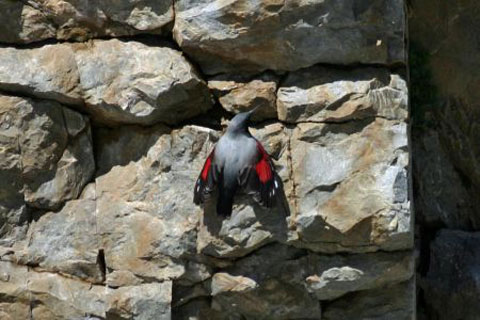
May 3: Gavin Bieber on his just completed South Florida tour
The Spring Florida tour took in such wonderful sights as the seemingly endless “sea of grass” of the Everglades, the metropolitan coastline of Southeast Florida, whose many protected areas shelter many more species than just the “exotics” that it is known for, the fabulous cypress bottomlands laden with epiphytes and flowers, the upland pine/oak scrub and grassland savannahs of the central peninsula, the coastal mangroves and bays, and long stretches of sparkling white sand beaches. We had outstanding and repeated views of wading birds such as Glossy and White Ibis, Wood Stork, Roseate Spoonbill, 11 species of herons, and Limpkin, many of which were on nests and decked out in their full breeding regalia (see Cattle Egret, below). We located no less than four species of parrots alongside the aristocratic Common Myna (slumming in a gas station parking lot) and the arresting Spot-breasted Oriole. The throngs of nesting Sooty Terns and Brown Noddies whirling around the Dry Tortugas were wonderful as always, and we had excellent views of Brown and Masked Boobies enroute to the park. This year there were good number of migrants at Fort Jefferson: Yellow-billed Cuckoos, Indigo Buntings, Gray-cheeked Thrushes, 17 species of warblers and a calling Antillean Nighthawk. We were thrilled to have great views of virtually all of the South Florida specialties, with the real standouts including blushing Roseate Terns, a cooperative Mangrove Cuckoo, a group of male Shiny Cowbirds, White-crowned Pigeons, and Black-whiskered Vireo. It was a great week, with warm weather and fantastic birding.

